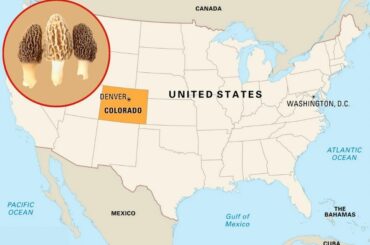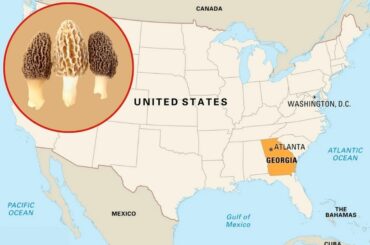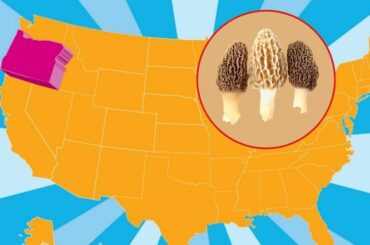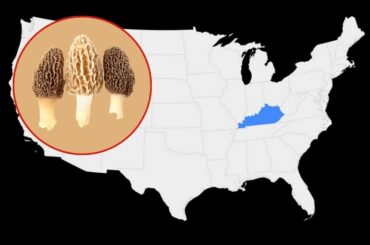Morel mushrooms, with their distinctive appearance and unique flavor, have captivated foragers and food enthusiasts for centuries. These elusive fungi are renowned for their rich earthy taste and delicate texture, making them highly sought after in culinary circles.
Are there morel mushrooms in North Carolina? In this article, we will explore the fascinating world of Morel mushrooms, their characteristics, culinary uses, and the possibility of finding them in the diverse landscapes of North Carolina.
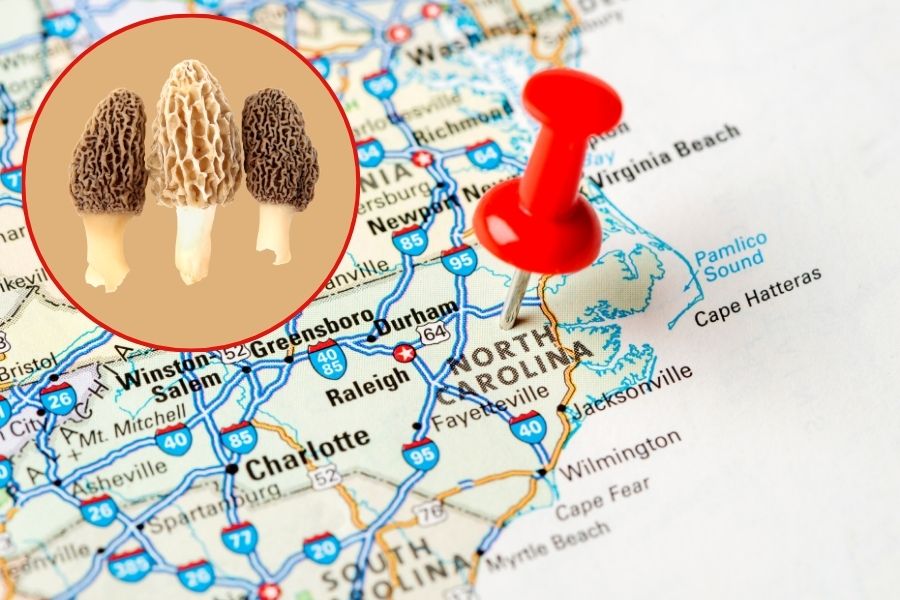
Are There Morel Mushrooms in North Carolina?
Contents
Morel mushrooms are not widespread in North Carolina as in some other regions, they can still be found in the state’s diverse landscapes. Their unique appearance, culinary versatility, and potential health benefits make them a captivating subject for foragers and food enthusiasts alike. North Carolina offers suitable habitats for Morel mushrooms, and with the right knowledge and approach, one can enjoy the thrill of hunting and savoring these elusive delicacies.
When venturing into the forests of North Carolina in search of Morels, it’s essential to be equipped with the necessary identification skills to distinguish true Morels from their toxic counterparts. Familiarize yourself with their distinct appearance, including the cone-shaped caps with a characteristic honeycomb pattern.
Morel Mushroom Hunting in North Carolina
While Morel mushrooms may not be as abundant in North Carolina compared to some other regions, the state still offers opportunities for enthusiastic foragers. The hunting season for Morels in North Carolina typically begins in early spring, around March or April, depending on weather conditions. It’s essential to be aware of any local regulations or permits required for foraging mushrooms.
Prime locations for Morel mushroom hunting in North Carolina include deciduous forests, particularly those with ash, elm, and poplar trees. Look for areas with well-drained soil and sufficient moisture, as these conditions favor the growth of Morels. Pay attention to wooded areas near rivers, streams, and old apple orchards, as these can be fruitful hunting grounds.
To increase your chances of success, consider the following tips when hunting Morel mushrooms in North Carolina:
- Timing is crucial: Morels tend to emerge after the first few warm spring days and rainfall. Monitor weather patterns and plan your foraging accordingly.
- Scan the forest floor: Carefully scan the ground, focusing on leaf litter, fallen branches, and areas with decaying organic matter. Morels often blend in with their surroundings, so keen observation is key.
- Be patient and thorough: Morels can be elusive, so be patient and take your time while searching. Walk slowly, scan the surroundings, and don’t overlook small or hidden spots where they may be hiding.
- Stay safe and ethical: When foraging, ensure you have proper identification of Morels to avoid harvesting toxic look-alike species. Respect the environment by practicing ethical harvesting techniques, such as not over-collecting and gently removing mushrooms to preserve their habitat.
Characteristics and Identification of Morel Mushroom
While North Carolina is not widely known as a traditional Morel hotspot, the state boasts diverse ecosystems that provide suitable habitats for these mushrooms. Some common Morel species found in North Carolina include the Yellow Morel (Morchella esculenta), Black Morel (Morchella elata), and Half-Free Morel (Morchella semilibera).
Morel mushrooms possess a distinct appearance that sets them apart from other fungi. Their cone-shaped caps feature a distinctive honeycomb pattern, resembling a sponge or brain-like texture. These mushrooms vary in size and color, ranging from small yellowish-brown Morels to larger dark brown or black Morels.
Habitat plays a crucial role in Morel mushroom growth. They thrive in certain environmental conditions, such as forests with well-drained soil, especially after rain showers and during the spring season. Identifying true Morels can be challenging, as there are several false or toxic look-alike species. It is essential to familiarize oneself with the key characteristics and features that distinguish true Morels from their counterparts.
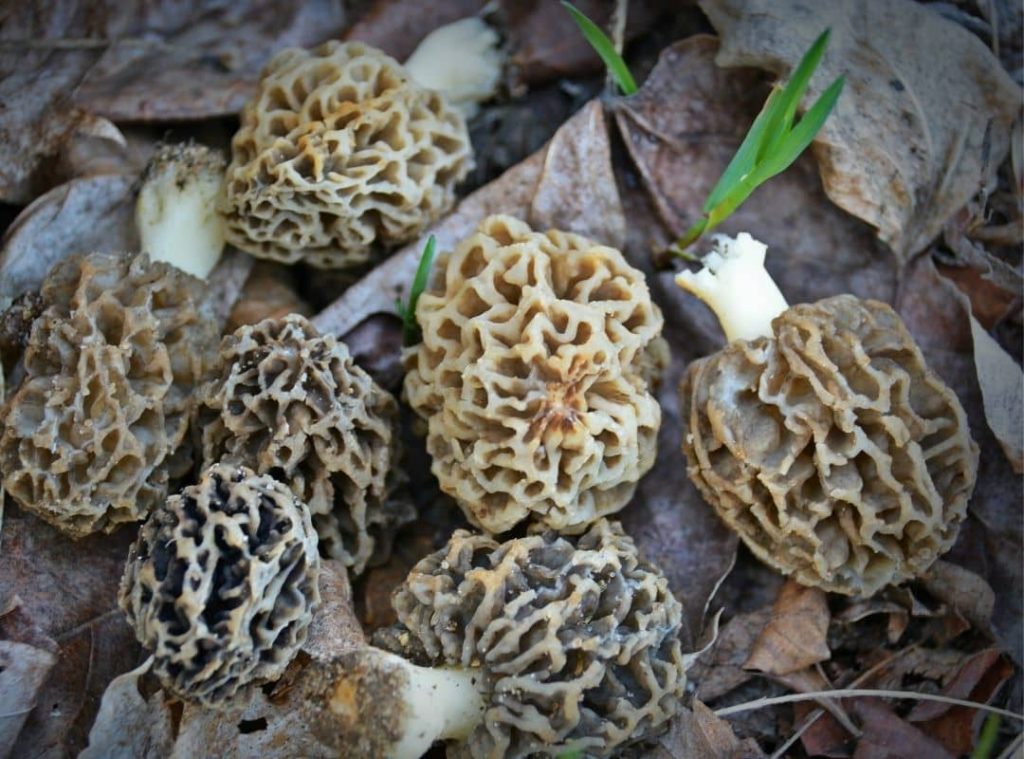
Benefits and Culinary Uses
Morel mushrooms offer not only a unique and delightful culinary experience but also various health benefits. These mushrooms are low in calories and fat, making them a nutritious addition to any diet. They are also rich in essential vitamins, minerals, and antioxidants.
When it comes to culinary applications, Morel mushrooms have a versatile nature. They can be used in a wide range of dishes, including soups, sauces, pasta, risottos, and even grilled or sautéed as a standalone side dish. The earthy and nutty flavor of Morels adds depth and complexity to recipes, making them a favorite among chefs and food enthusiasts.
In various culinary traditions, Morel mushrooms hold a special place. They are often celebrated as a delicacy during the spring season, when they make their appearance. Morel festivals and events are held in different regions, where chefs showcase their creativity by incorporating Morels into unique and delectable dishes.
Aside from their culinary uses, Morel mushrooms are known for their potential health benefits. They have been used in traditional medicine for centuries due to their purported anti-inflammatory and immune-boosting properties. Morels contain compounds that may have antimicrobial and anticancer effects, although further research is needed to fully understand their medicinal potential.
Conservation Efforts and Sustainability
Conservation efforts play a vital role in preserving Morel mushroom populations and their habitats. Due to their popularity, overharvesting can pose a threat to these delicate fungi. Sustainable harvesting practices are essential to ensure the long-term survival of Morels and maintain the ecological balance of the forests.
To promote sustainability, it’s crucial to:
- Harvest responsibly: Only collect Morel mushrooms you can positively identify and intend to use. Avoid taking more than you need to allow for spore dispersal and future growth.
- Educate others: Spread awareness about sustainable Morel mushroom harvesting practices among fellow foragers and enthusiasts. Encourage responsible behavior and share knowledge about identifying true Morels.
- Preserve habitats: Protect the natural habitats where Morels thrive by avoiding damage to the surrounding flora and fauna. Be mindful of the impact of your footsteps and avoid trampling vegetation.
- Support conservation organizations: Contribute to organizations dedicated to mushroom conservation and research. These groups work towards preserving mushroom biodiversity and educating the public about sustainable practices.
Conclusion
In conclusion, while Morel mushrooms may not be as abundant in North Carolina as in some other regions, the thrill of the hunt and the satisfaction of savoring these delicacies make the endeavor worthwhile.
Embrace the opportunity to explore the diverse landscapes of North Carolina, armed with knowledge, patience, and a deep appreciation for nature’s bounties. Discover the joy of finding Morels, indulging in their culinary versatility, and contributing to the conservation efforts that ensure their existence for generations to come.
FAQs
Are Morel mushrooms safe to eat raw? A1: It is generally recommended to cook Morel mushrooms thoroughly before consuming them. Cooking helps eliminate any potential bacteria or toxins and enhances their flavor and texture.
Can Morel mushrooms be cultivated? A2: Morel mushrooms have proven to be challenging to cultivate on a large scale. Their growth and reproduction are complex processes that require specific environmental conditions and symbiotic relationships with trees. As of now, most commercially available Morels are still harvested from the wild.
How do I store fresh Morel mushrooms? A3: To store fresh Morel mushrooms, gently brush off any dirt or debris and place them in a paper bag or a breathable container. Store them in the refrigerator and use them within a few days for optimal freshness.
Are there any toxic look-alikes to Morels? A4: Yes, there are several toxic mushrooms that resemble Morels. It’s crucial to be able to positively identify true Morels and distinguish them from their poisonous counterparts. If in doubt, consult an expert or leave them be.
Can Morel mushrooms be frozen? A5: Yes, Morel mushrooms can be frozen for long-term storage. Clean and slice the mushrooms before placing them in airtight containers or freezer bags. Properly stored Morels can retain their quality for several months when frozen.

